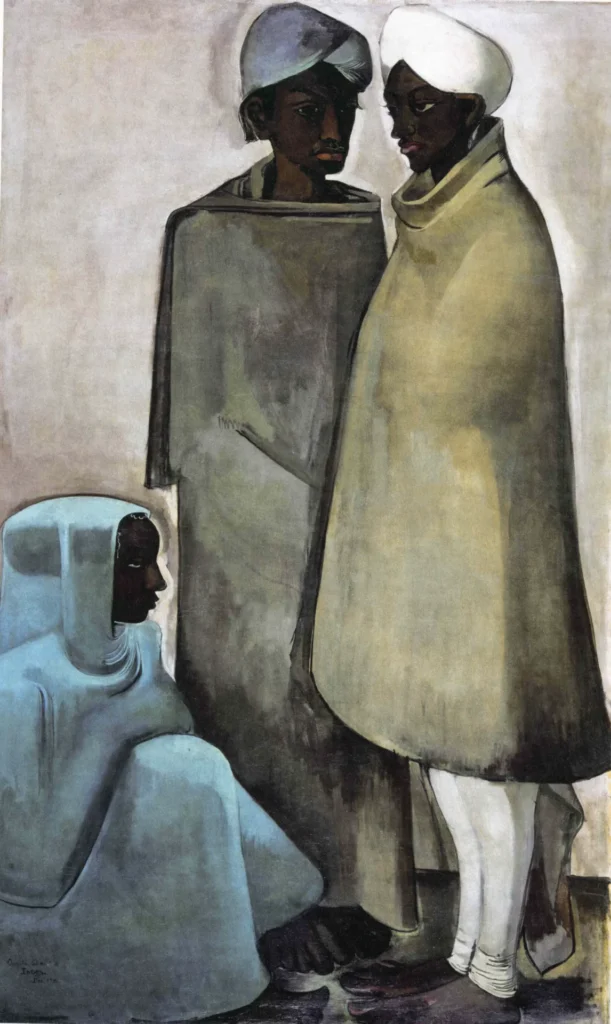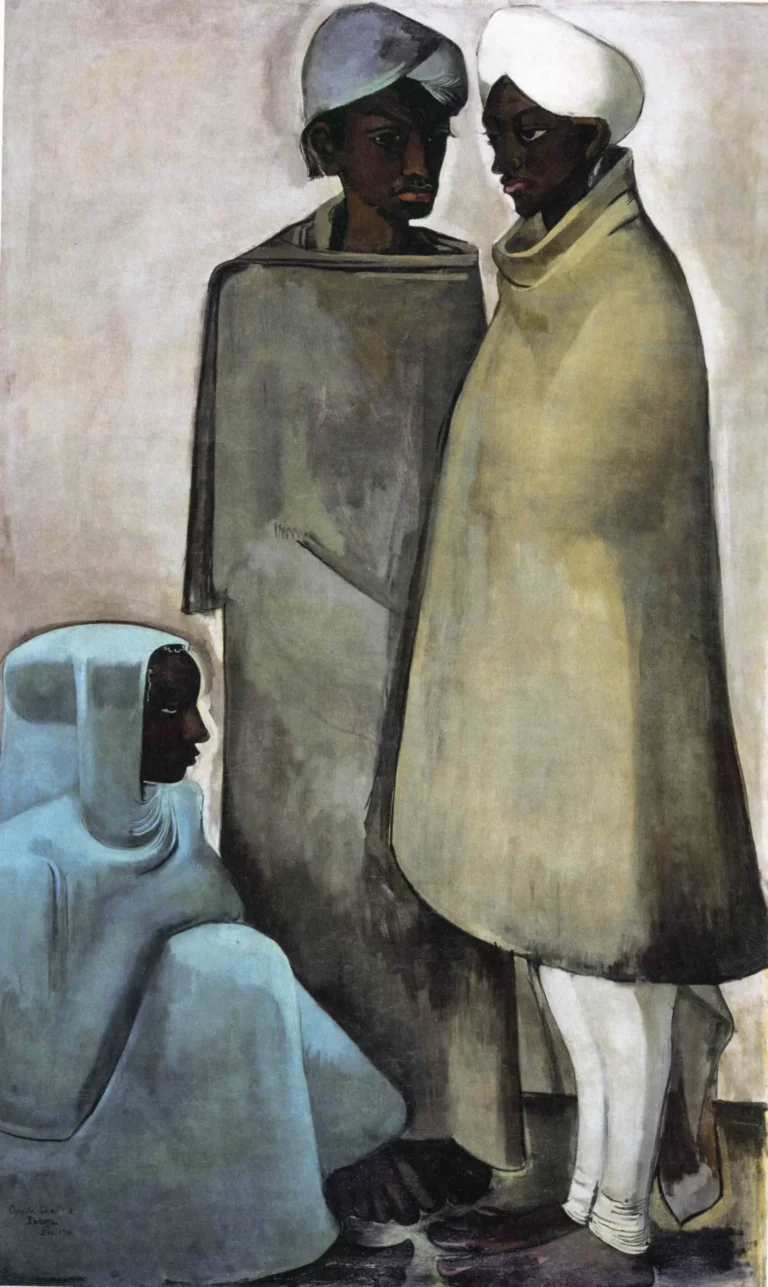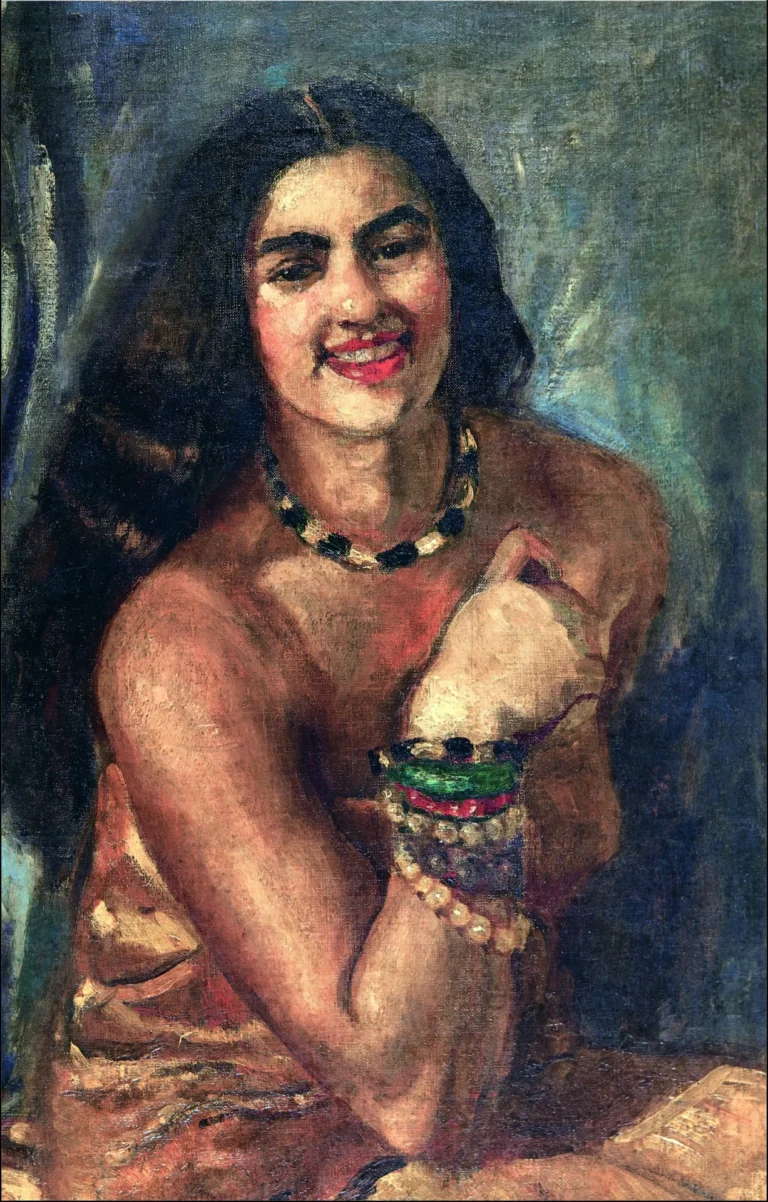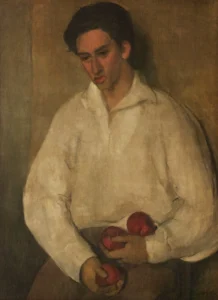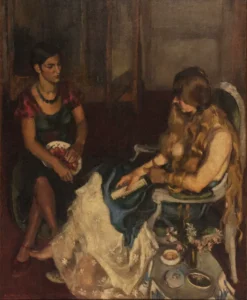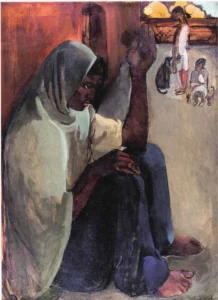Hill Men (1935)
Amrita Sher-Gil's Hill Men (1935) captures the essence of rural Indian life through simplified figures that evoke a deep sense of dignity and pathos. During her stay in Simla, Sher-Gil embraced her Indian heritage, depicting the struggles of the rural poor with somber expressions against a muted background. The painting, influenced by both Post-Impressionism and Indian artistic traditions, reflects her desire to eschew emotional sentimentality in favor of realism. This artwork is heralded as a cornerstone of her career and a notable milestone in Indian modernism.
Year 1935
About the Artwork
Hill Men was created during Amrita Sher-Gil’s winter stay in Simla in 1935, marking a profound reconnection with her Indian roots. This period of artistic introspection led her to focus on the lives of rural Indian villagers, manifesting in the powerful portrayals seen in both Hill Men and its counterpart "Hill Women." These works are characterized by their stylized figures and somber themes, reflecting Sher-Gil’s adeptness at merging modernist techniques with traditional narratives. The painting showcases the endurance of the rural community while steering clear of the emotional manipulation often found in art. After its exhibition at the Paris Salon in 1936, Hill Men garnered significant critical acclaim, highlighting Sher-Gil's innovative position in the art world.
Did You Know
Liked what you see? Add it to your collection.
Enjoyed reading? Share it.
... continued
Context and Inspiration
Hill Men and "Hill Women" were painted during Sher-Gil's stay in Simla, India, in the winter of 1935. This period marked a return to her Indian roots and a renewed focus on depicting the lives of rural Indian villagers.
Composition and Style
The painting is characterized by its simplified and stylized handling of the figures. The men are depicted with elongated bodies and somber expressions, reflecting a sense of dignity and pathos. The style is influenced by Post-Impressionism and the realism of Ajanta frescoes, blending modernist techniques with traditional Indian art. The figures are set against a simple, often dark background, with an emphasis on strong lines and a limited color palette. This approach gives the painting a 'flat-style' reminiscent of Gauguin’s works.
Themes and Symbolism
The painting aims to capture the lives of the rural Indian poor, avoiding sentimentalism and instead presenting a more realistic and melancholic portrayal. Sher-Gil sought to create "purely pictorial" works, eschewing "cheap emotional appeal." The somber expressions and the overall composition convey a sense of vulnerability and endurance, reflecting the hardships faced by the rural community.
Exhibitions and Reception
Hill Men. along with "Hill Women," was exhibited at the Paris Salon in 1936 and later in Hyderabad and Lahore. The paintings received critical attention, with art critics and historians like Yashodhara Dalmia and Giles Tillotson praising them as important works in Sher-Gil's career.
Artistic Significance
These paintings mark a significant phase in Sher-Gil's artistic journey, where she combined Western modernist techniques with Indian subjects and artistic traditions, creating a unique form of Indian modernism.




